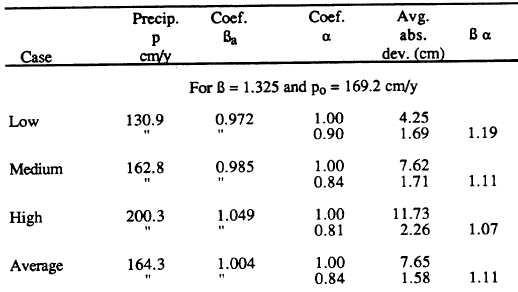The division of water loss into leakage and evaporation is problematic. On the regional map for average annual lake evaporation of Kohler and others’ (1959), Crater Lake is located between the 81 and 86 cm/y contours. Meyers (1962, p. 95) interpolated an evaporation rate of 83 cm/y for Crater Lake for a total evaporation of 4.42×107 m3/y over the area of the lake. Phillips (1968) calculated the evaporation rate by subtracting the leakage from the total water supply. He measured the leakage of 149 cm/y by looking at changes in water levels for Crater Lake during cold periods when there was no precipitation and assuming that evaporation would be minimal. Using this study’s value for water supply of 224 cm/y, Phillips’ estimate of leakage results in an evaporation rate of 75 cm/y. Redmond (1990) calculated leakage of 127 cm/y from two periods when the lake was frozen. Using this study’s value for water supply, Redmond’s estimate of leakage results in an evaporation rate of 97 cm/y. Neither of these figures for leakage are particularly satisfying as they are based on short periods of data. However, the major discrepancy in evaporation rates in Table 1 was because of Redmond’s high value for total water supply of247 cm/y. Accepting this study’s value for total water supply, the estimates of evaporation now range from 75 to 97 cm/y, and the estimates bracket the estimated rate of Meyers (1962). For purposes of calculation, a rate of 85 cm/y seems reasonable, recognizing that this rate is uncertain by ± 10%.
***previous*** — ***next***



